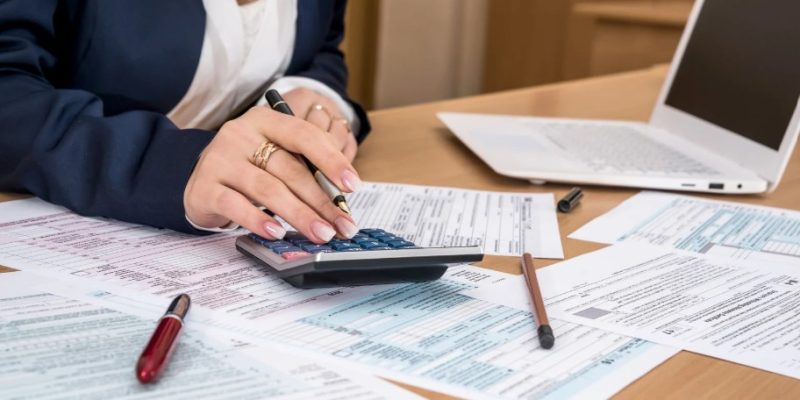
Tax Code 1185L | A Guide for UK Taxpayers
Understanding tax codes is essential for managing personal finances and ensuring the correct amount of tax is deducted from earnings. Many UK taxpayers come across different tax codes on their payslips, each with a specific meaning and impact on their taxable income.
Some tax codes indicate standard allowances, while others reflect adjustments due to individual circumstances. Among these, 1185L has been commonly assigned in previous years, but its significance may have changed over time.
Knowing what this tax code represents, how it is applied, and whether any updates are needed can help taxpayers avoid unexpected tax bills or refunds.
What Does the Tax Code 1185L Mean?

The tax code 1185L was previously used by HMRC to indicate a taxpayer’s tax-free personal allowance of £11,850.
Although this code is no longer in widespread use, understanding its structure can help individuals decipher how tax codes work in general.
Breaking Down Tax Code 1185L
- Numbers (1185): The number represents the amount of tax-free income an individual is entitled to before tax is deducted. This is determined by multiplying the number in the tax code by 10 (£11,850 in this case).
- Letter ‘L’: The ‘L’ suffix means that the taxpayer qualifies for the standard Personal Allowance, applicable to most individuals in the UK.
The Personal Allowance has been frozen at £12,570 since the 2021-22 tax year, meaning that taxpayers today typically have the tax code 1257L instead of 1185L.
If your payslip still shows 1185L, it is advisable to check with HMRC or your employer.
How Does Tax Code 1185L Affect My Personal Allowance?
The Personal Allowance is the amount of income you can earn before paying any income tax. Tax code 1185L meant that an individual could earn up to £11,850 tax-free before tax was deducted.
However, since the 2021-22 tax year, the standard Personal Allowance has been £12,570. If a taxpayer’s payslip still reflects 1185L, it may be outdated, potentially leading to incorrect tax deductions.
Key Considerations:
- If your tax code is lower than expected, you may be paying more tax than necessary.
- If your tax code is higher than expected, you might owe tax at the end of the year.
- Your tax-free personal allowance can be affected by other factors, such as company benefits, additional income, or state pension payments.
Why Is Tax Code 1185L Used for Many UK Taxpayers?
While tax code 1185L was widely used in previous years, most taxpayers now have the 1257L tax code. However, some individuals may still see 1185L due to:
- Payroll System Errors: Employers may not have updated tax codes in their payroll systems.
- Outdated HMRC Records: If HMRC has not received updated income details, they may continue using an old tax code.
- Temporary Assignments: Sometimes, outdated codes are used temporarily until HMRC processes new tax information.
If you notice 1185L on your payslip, it is best to check with HMRC or your employer to ensure you are being taxed correctly.
How Do Employers Use Tax Code 1185L?

Employers rely on tax codes provided by HMRC to determine how much income tax should be deducted from an employee’s salary under the PAYE (Pay As You Earn) system.
How It Works:
- The employer inputs the tax code into payroll software, which calculates tax deductions accordingly.
- If an incorrect tax code is used, an employee may either pay too much or too little tax.
- HMRC may update tax codes during the year, and employers are responsible for applying the changes to ensure accurate tax deductions.
A tax code like 1185L should no longer be in use for the 2024-25 tax year. If an employer is still using it, it may result in incorrect tax calculations. Employees should review their payslips and confirm their tax code is correct.
Can My Tax Code Change During the Year?
Yes, HMRC can update tax codes throughout the year based on changes in income, benefits, or employment status. Some common reasons why a tax code might change include:
- Starting a new job – If HMRC does not have full details of your new income, a temporary tax code might be assigned.
- Receiving taxable state benefits – Some state benefits (e.g., State Pension) reduce the tax-free allowance, requiring a tax code adjustment.
- Receiving company benefits – Benefits such as a company car or medical insurance are taxable, which may lead to an adjustment in tax code.
- Tax underpayments from previous years – If HMRC determines that you underpaid tax in a previous year, they may adjust your tax code to recover the amount owed.
- Overpayment of tax in previous years – If too much tax was paid, HMRC may adjust the tax code to correct the overpayment.
It is important to check tax codes regularly, especially after any major financial or employment changes.
Pros and Cons of Being on Tax Code 1185L
Although tax code 1185L was widely used in previous tax years, it is now outdated.
However, understanding the advantages and disadvantages of this tax code can help individuals assess whether they are on the correct tax code and avoid potential tax issues.
Pros of Being on Tax Code 1185L
1. Standard Personal Allowance (for past tax years):
- The tax code 1185L allowed individuals to earn £11,850 tax-free before income tax was deducted.
- It was suitable for most employees and pensioners who were entitled to the basic Personal Allowance.
2. Straightforward Taxation:
- For individuals who only had one job and no additional taxable benefits, 1185L ensured that tax was calculated accurately.
- Employees did not need to take action, as tax was automatically deducted through the PAYE system.
3. Employer and HMRC Recognition:
- Employers and HMRC were familiar with tax code 1185L, making payroll processing efficient and error-free for most taxpayers.
- Employees did not have to submit tax returns unless they had additional income sources.
4. Easy to Transition to a New Tax Code:
- If HMRC updated tax codes due to pay increases, state benefits, or additional income, individuals could be easily transferred to the correct tax code without much intervention.
Cons of Being on Tax Code 1185L
1. Outdated for the 2024-25 Tax Year:
- Tax code 1185L is no longer valid, as the Personal Allowance has increased to £12,570 since the 2021-22 tax year.
- If an individual is still on 1185L, they may be paying more tax than necessary and should check with HMRC.
2. Potential Overpayment of Tax:
- If a taxpayer should be on 1257L (current standard tax code) but is still on 1185L, they are not receiving their full tax-free allowance, leading to higher tax deductions.
- This could result in a tax refund at the end of the year, but it also means having less take-home pay throughout the year.
3. Does Not Consider Additional Income or Benefits:
- If an individual has multiple sources of income, company benefits (such as a company car), or taxable state benefits, the tax code 1185L may not reflect these changes, leading to tax underpayment.
- HMRC may later adjust the tax code to recover the unpaid tax, resulting in unexpected deductions.
4. Possible Emergency Tax Assignment:
- If 1185L is incorrectly applied when an individual changes jobs or starts receiving a pension, HMRC may temporarily place them on an emergency tax code, such as 1257L W1/M1 or BR, which could result in higher tax deductions.
- Individuals need to actively check and update their tax code to avoid this issue.
5. Employer Payroll Errors:
- Some employers may fail to update payroll records, leading to continued use of an outdated tax code like 1185L.
- This can create confusion and requires the employee to proactively correct it by contacting HMRC or their employer.
What Should You Do If You Are Still on Tax Code 1185L?

If your payslip or tax documents still show 1185L, take the following steps:
- Check Your Tax Code Online: Log into your Personal Tax Account on the HMRC website to view your current tax code.
- Review Your Payslips: Ensure your tax code is correct and aligns with the current Personal Allowance of £12,570.
- Contact HMRC: Call 0300 200 3300 to request an update if you suspect your tax code is outdated.
- Speak to Your Employer: Employers are responsible for applying the correct tax code based on HMRC instructions. If your code is wrong, ask them to update it.
- Claim a Tax Refund: If you have overpaid tax due to an incorrect tax code, submit a claim to HMRC for a refund.
What Are Emergency Tax Codes and How Do They Differ from 1185L?
An emergency tax code is a temporary code assigned when HMRC lacks complete information about a taxpayer’s income. Common emergency tax codes include:
- 1257L W1/M1 – A temporary version of the standard 1257L tax code, meaning tax is calculated on a weekly/monthly basis rather than annually.
- BR (Basic Rate) – Indicates all income is taxed at 20%, usually used when an individual has more than one job.
- D0 (Higher Rate) – Means all income is taxed at 40%, typically applied when a second job or pension exists.
Key Differences Between 1185L and Emergency Tax Codes
| Tax Code | Meaning | When It’s Used |
| 1185L | Standard tax code from previous years | When an individual qualifies for a tax-free personal allowance of £11,850 (outdated) |
| 1257L | Current standard tax code (Personal Allowance £12,570) | Assigned to most UK taxpayers |
| BR | All income taxed at 20% | When HMRC assumes all income is taxable at the basic rate |
| D0 | All income taxed at 40% | Usually applied to second incomes or pensions |
| 1257L W1/M1 | Temporary emergency tax code | Used when HMRC lacks full income details |
If you receive an emergency tax code, it is crucial to update your records with HMRC or your employer to ensure you are not overpaying tax.
How Can I Check and Update My Tax Code?
Verifying your tax code ensures you are paying the correct amount of tax. Here’s how to check and update your tax code:
- Check Your Payslip – Your tax code is printed on your monthly payslip.
- Review Your P45 or P60 – If you changed jobs or completed a tax year, these documents show your tax code.
- Log Into Your HMRC Account – The UK government’s online portal provides tax code details and updates.
- Contact HMRC Directly – Call 0300 200 3300 if you suspect an incorrect tax code.
- Speak to Your Employer – If your tax code appears incorrect, your employer’s payroll department may help resolve the issue.
Keeping track of your tax code prevents unexpected tax bills or refunds.
Where Can I Get Professional Help with My Taxes?

For individuals who need help understanding or correcting their tax code, several options are available:
- HMRC Helpline – The official source for tax code inquiries and updates.
- Independent Tax Advisors – Private tax accountants who can review tax codes and help with tax planning.
- Online Tax Calculators – Various online tools help estimate tax based on income and tax code.
Professional advice is especially useful for individuals with multiple sources of income, self-employment earnings, or complex tax situations.
Conclusion
Understanding tax code 1185L is important for managing your income tax effectively. While this tax code was once widely used, most UK taxpayers now have 1257L, reflecting the current personal allowance of £12,570.
Checking your tax code regularly ensures accurate tax deductions and prevents unexpected tax bills or refunds. If you notice an incorrect tax code on your payslip, contact HMRC or a tax professional for clarification.
Staying informed about tax codes helps you plan your finances and remain compliant with UK tax regulations.
FAQs About Tax Code 1185L
What does tax code 1185L mean?
Tax code 1185L meant a personal allowance of £11,850, allowing individuals to earn this amount before paying income tax. It has since been replaced by 1257L.
Is tax code 1185L still used in 2024-25?
No, 1185L is outdated. The current standard tax code for most UK taxpayers is 1257L, reflecting the frozen personal allowance of £12,570.
How do I check my tax code?
You can check your tax code on your payslip, P45, P60, or by logging into your HMRC online account. If it’s incorrect, contact HMRC.
What happens if my tax code is wrong?
An incorrect tax code may result in overpaying or underpaying tax. Contact HMRC to correct it and request a refund if necessary.
What is the difference between tax codes 1185L and 1257L?
The main difference is the personal allowance. 1185L meant a tax-free allowance of £11,850, while 1257L reflects the current allowance of £12,570.
Can my tax code change during the year?
Yes, HMRC can update your tax code due to changes in income, benefits, multiple jobs, or tax underpayments/overpayments.
How do I update my tax code if it’s incorrect?
You can update your tax code by calling HMRC, using your HMRC online account, or informing your employer if they are using the wrong code.





